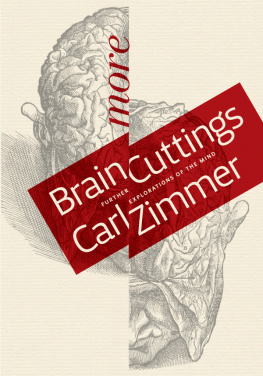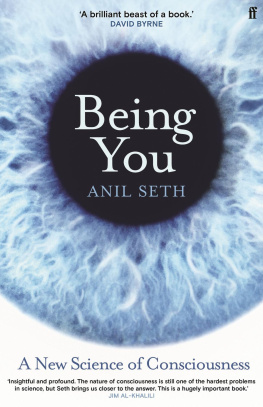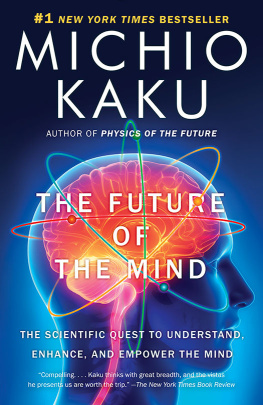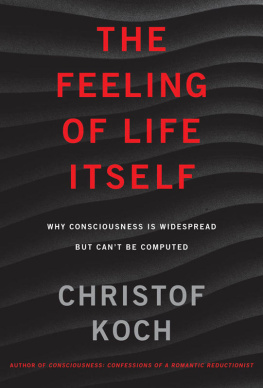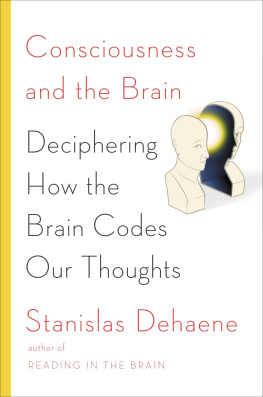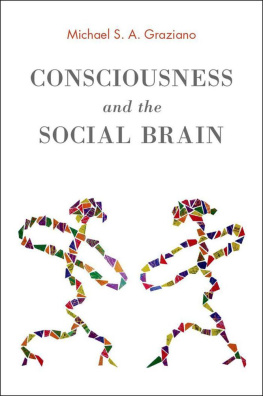Zoltan Torey - The Crucible of Consciousness: An Integrated Theory of Mind and Brain
Here you can read online Zoltan Torey - The Crucible of Consciousness: An Integrated Theory of Mind and Brain full text of the book (entire story) in english for free. Download pdf and epub, get meaning, cover and reviews about this ebook. year: 2009, publisher: The MIT Press, genre: Romance novel. Description of the work, (preface) as well as reviews are available. Best literature library LitArk.com created for fans of good reading and offers a wide selection of genres:
Romance novel
Science fiction
Adventure
Detective
Science
History
Home and family
Prose
Art
Politics
Computer
Non-fiction
Religion
Business
Children
Humor
Choose a favorite category and find really read worthwhile books. Enjoy immersion in the world of imagination, feel the emotions of the characters or learn something new for yourself, make an fascinating discovery.
- Book:The Crucible of Consciousness: An Integrated Theory of Mind and Brain
- Author:
- Publisher:The MIT Press
- Genre:
- Year:2009
- Rating:5 / 5
- Favourites:Add to favourites
- Your mark:
- 100
- 1
- 2
- 3
- 4
- 5
The Crucible of Consciousness: An Integrated Theory of Mind and Brain: summary, description and annotation
We offer to read an annotation, description, summary or preface (depends on what the author of the book "The Crucible of Consciousness: An Integrated Theory of Mind and Brain" wrote himself). If you haven't found the necessary information about the book — write in the comments, we will try to find it.
Zoltan Torey: author's other books
Who wrote The Crucible of Consciousness: An Integrated Theory of Mind and Brain? Find out the surname, the name of the author of the book and a list of all author's works by series.
The Crucible of Consciousness: An Integrated Theory of Mind and Brain — read online for free the complete book (whole text) full work
Below is the text of the book, divided by pages. System saving the place of the last page read, allows you to conveniently read the book "The Crucible of Consciousness: An Integrated Theory of Mind and Brain" online for free, without having to search again every time where you left off. Put a bookmark, and you can go to the page where you finished reading at any time.
Font size:
Interval:
Bookmark:

Zoltan Torey
with a foreword by Daniel C. Dennett
To my wife Margaret Dawn
ix
xi
xiii
It is with real pleasure that I acknowledge my debt to a small group of quite special people. I want to express my appreciation for my father's generosity of spirit, for his peerless humanity. Its undiminished glow warmed my youth, its light accompanies me.
I want to thank my loyal friend David Lenton, who for more than twenty years read and recorded for me, enabling me in spite of my blindness, to range across the literature of many disciplines. Without David's amassing this large body of essential information, this book could not have been written I acknowledge my debt to the late John Falconer. For years we read together, his friendship broadened my outlook and enriched my life. I also want to thank my dear friend Charles Moess, whose support and encouragement has been a source of strength.
A special place is to be reserved for my long-time friend Nicholas Tschoegl of Pasadena, California, who with his outstanding intellect, knowledge and experience, generously undertook the task of editing this text. Sophie and Nick Tschoegl's friendship and hospitality during our repeated stays in the United States, was a much appreciated aspect of this endeavour.
Heartfelt thanks go to my dear friend Jean Cooney for her practical advice and tireless constructive labours in streamlining the text for this MIT Press edition and for causing this project in the first place to fall into the right hands, in the right way and at the right time.
Then there is Professor David Chalmers, who, as the Director of the Center for Consciousness Studies invited me to be one of the keynote speakers at the 2004 Biennial Conference in Tucson, Arizona, and Professor Dan Dennett who, following on our serendipitous meeting at the conference, gave me his generous support and was instrumental in finding the right publisher for this work.
I remember the many enjoyable hours my wife and I spent with Chris Croft in turning the typescript into computer print for the original publication; and now I am very much indebted to Beverley Ranclaud for her expert assistance and cheerful cooperation in preparing the text for the MIT Press edition. I also want to thank Syd Hooker, whose support, friendship, and enthusiastic participation have been of real value to me.
I recall with appreciation the original publishing team Oxford University Press in Melbourne, Richard Sansom and Peter Rose, and I now want to thank the excellent team at MIT Press, Tom Stone, the senior editor, and in particular Judy Feldmann, who, with courtesy and efficiency, ironed out problems on the way to the book's successful publication.
Last but not least, I want to thank my wife Dawn who with her penetrating insight, judgement and constructive criticism greatly contributed to the upgrading of the text. I wish to thank her for her unfailing emotional support and for all she means to me. It is to her I dedicate this book in love, friendship, and deep appreciation.
There are lots of books on consciousness being published these days, and I end up skimming most of them and reading a few of them. Reading somebody else's take on the whole set of issues is often frustrating and depressing: they just don't get it. Other times it is tantalizing; they start on the right foot, in other words, where I start! and they get lots of it, and clear up some of the fog and even shine some light on part of the terra incognita, but then wander off into some unlikely and unconvincing blind alleys. Rarely, something much better happens: I encounter somebody who starts in quite a different place, with a different agenda and different presuppositions, but who eventually arrives in my own neighborhood having blazed some new trails. Zoltan Torey is such a pathfinder. And surprisingly, the disagreements I still have with some of his ways of putting things, and even with some of his main verdicts, don't disturb me at all. On the contrary, I find it powerfully reassuring that two such different perspectives can home in on so much common ground. Like everybody else who works on the perplexing problems of the mind and consciousness, I have always had a sense that my own vision, while fundamentally correct, of course could be improved upon, and Torey's book contains quite a few suggestions worth further reflection and research.
Torey firmly roots his theory of consciousness in evolution by natural selection, as do I, but he comes at the issues with some strikingly different emphases. He sees that human consciousness is profoundly unlike the consciousness of all other species, and that language is the key to understanding this difference-another point of deep agreement between us-but he has a usefully different account of what kind of difference language makes and how. Much of this I will happily adopt from now on. He and I agree on the utter misguidedness of those who worry about the possibility of zombies and "the Hard Problem" but he has some novel ways of showing what is so bizarrely wrong about it. The greatest point of disagreement between us is on the power of the computational perspective. By my lights, he has been misled by a few other would be pathfinders-the usual suspects: Edelman, Penrose, Searle, Fodor-into a pinched and unrealistic caricature of artificial intelligence. If Al were what they say it is, I too would turn my back on it. But unlike these, and other, anti-computational ideologues, Torey surefootedly picks his way to a suitably astringent and non-miraculous, nonromantic vision of how the brain works its "magic." He is, I insist, computa- tionalist malgre lui. As such, his ways of putting things often shed new light on just what is going on in the "computational" brain, since he has to find alternative metaphors to stand in for the now somewhat overworked comparison with computers. Just as poets often find that the constraints of rhyme and meter force them to discover strikingly apt expressions of their thoughts, it turns out that couching a computational theory of the mind in resolutely noncomputational terms pays dividends.
There is much to repay readers in this book: to the uninitiated, it is a graceful and wise introduction to many of the central problems and arguments; to the veterans, it is a quite bountiful source of arrestingly different slants on familiar topics. Does some of this originality stem from the fact that the author has been blind for a half century, and has developed his skills of visual imagination to an uncanny degree? Perhaps this too has been a constraint turned into a blessing. Food for thought, well served.
I stand at the seashore alone and start to think. There are rushing waves, mountains of molecules, each stupidly minding its own business, trillions apart yet forming white surf in unison. Ages on ages before any eyes could see, year after year thunderously pounding the shore as now. For whom for what on a dead planet with no life to entertain. Never at rest, tortured by energy, wasted prodigiously by the Sun, poured into space, its might makes the sea roar. Deep in the sea all molecules repeat the patterns of one another till complex new ones are formed. They make others like themselves and a new dance starts. Growing in size and complexity, living things, masses of atoms, DNA, proteins dancing a pattern ever more intricate. Out of the cradle onto dry land, here it is standing, atoms with consciousness, matter with curiosity, stands at the sea, wonders at wondering, I, a universe of atoms an atom in the universe.
Font size:
Interval:
Bookmark:
Similar books «The Crucible of Consciousness: An Integrated Theory of Mind and Brain»
Look at similar books to The Crucible of Consciousness: An Integrated Theory of Mind and Brain. We have selected literature similar in name and meaning in the hope of providing readers with more options to find new, interesting, not yet read works.
Discussion, reviews of the book The Crucible of Consciousness: An Integrated Theory of Mind and Brain and just readers' own opinions. Leave your comments, write what you think about the work, its meaning or the main characters. Specify what exactly you liked and what you didn't like, and why you think so.


